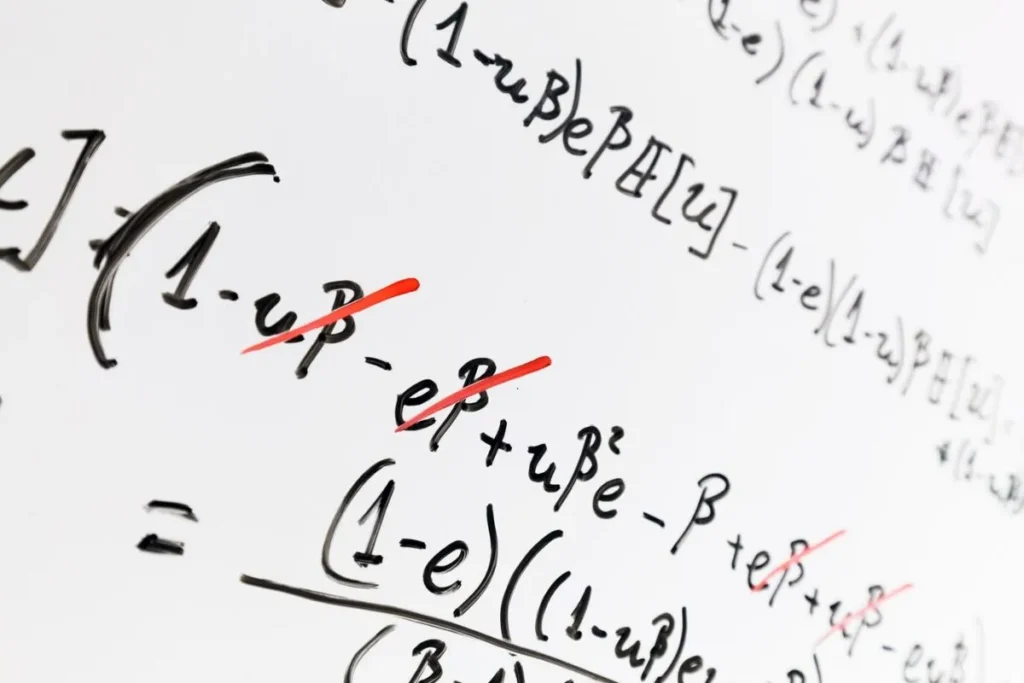Mathematics in Kinetic Art is a fascinating field that combines the precision of mathematics with the dynamic nature of art. It introduces us to an exciting world where geometry, patterns, and symmetry come to life through motion.
Kinetic art, with its emphasis on movement, provides an innovative medium for exploring mathematical concepts. This intersection is where visual representation transforms into artistic expression, creating mesmerizing pieces that challenge our perception.
In this article, we will delve into the intricate relationship between mathematics and kinetic art. We will examine how artists use mathematical principles to create balanced, dynamic compositions that captivate viewers.
Understanding Kinetic Art
Kinetic art is a form of art that incorporates movement as a fundamental aspect of its design. This movement can be powered by natural forces such as wind or water, mechanical devices, or viewer interaction.
Originating in the early 20th century, kinetic art evolved as artists began experimenting with motion to create dynamic visual experiences. This movement challenged traditional static art forms and introduced new possibilities for creative expression.
Notable kinetic artists include Alexander Calder, known for his mobiles, and Jean Tinguely, recognized for his mechanical sculptures. Their works demonstrate how motion can transform static objects into captivating, ever-changing pieces.
The Role of Mathematics in Kinetic Art
Mathematics in Kinetic Art plays a crucial role in developing balanced and harmonious designs. Mathematical principles such as geometry, symmetry, and patterns are essential for creating visually appealing and structurally sound kinetic sculptures.
Artists often use geometric shapes and patterns to create movement and complexity in their work. These elements not only add aesthetic value but also bring a sense of order and balance to the artwork.
Additionally, mathematical concepts such as algorithms and fractals are utilized to create intricate and repetitive patterns. These patterns can produce an almost hypnotic effect, drawing the viewer into the artwork’s dynamic beauty.
Geometry in Kinetic Art
Geometry is a fundamental aspect of kinetich4tic art, providing the structural foundation for many designs. Geometric shapes and forms are used to create balance and order in kinetic sculptures.
Shapes such as circles, triangles, and polygons are commonly used in kinetic art to create visually appealing compositions. These shapes can be repeated, rotated, and manipulated to produce a sense of movement and dynamism.
Moreover, geometric principles help artists calculate the mechanics and balance of the moving parts. This ensures that the artwork functions correctly and maintains its intended motion over time.
Patterns and Symmetry
Patterns play a significant role in kinetic art, adding complexity and depth to the designs. Mathematical patterns, such as tessellations and fractals, are often used to create visually engaging and intricate kinetic sculptures.
These patterns can produce a mesmerizing effect, capturing the viewer’s attention and encouraging them to explore the artwork further. The repetition and variation of patterns create a sense of movement and rhythm in the piece.
Symmetry is another important element in kinetic art. Symmetrical designs provide a sense of balance and harmony, enhancing the overall aesthetic appeal of the artwork. This balance is crucial, especially in mobile sculptures where equal weight distribution is essential for proper movement.
Balance and Motion
Balance is a critical consideration in kinetic art, ensuring that the artwork remains stable and functions as intended. Artists must carefully calculate the weight and distribution of each component to achieve equilibrium.
Motion, on the other hand, is the essence of kinetic art. The movement can be subtle or dramatic, depending on the artist’s intention. Achieving the desired motion requires a deep understanding of mechanics and physics.
Combining balance with motion, artists create kinetic sculptures that not only move but also maintain their stability and structure. This interplay results in captivating pieces that offer a unique visual and sensory experience.
Visual Representation and Artistic Expression
Kinetic art offers a unique form of visual representation, transforming mathematical concepts into tangible and dynamic artworks. This transformation allows mathematical ideas to be expressed in a way that is accessible and engaging to a wider audience.
Artistic expression in kinetic art is deeply influenced by the mathematical principles underlying the design. The use of geometry, patterns, and symmetry adds depth and complexity to the artwork, enhancing its visual impact.
This intersection of mathematics and art not only broadens the scope of creative possibilities but also challenges our understanding and perception of both fields. Kinetic art thus becomes a powerful medium for exploring and celebrating the beauty of mathematics.
Case Studies: Notable Examples
Several kinetic artists have successfully integrated mathematical principles into their work, creating iconic pieces that serve as case studies for Mathematics in Kinetic Art.
Here are a few examples:
Alexander Calder’s Mobiles
Alexander Calder’s mobiles are renowned for their delicate balance and grace. These mobile sculptures, composed of geometric shapes and thin wires, are designed to move with the slightest air currents.
Calder’s work exemplifies the use of geometry and balance in kinetic art. Each element is carefully calculated to ensure the overall stability and motion of the sculpture, creating a harmonious and dynamic visual effect.
Jean Tinguely’s Mechanical Sculptures
Jean Tinguely’s mechanical sculptures are complex, whimsical creations that often incorporate motors and moving parts. These sculptures are designed to produce random, unpredictable movements, adding an element of chaos to the artwork.
Tinguely’s work highlights the use of mechanics and physics in kinetic art. The intricate designs and moving components demonstrate how mathematical principles can be applied to create dynamic and engaging sculptures.
Yaacov Agam’s Kinesthetic Art
Yaacov Agam’s kinesthetic art utilizes optical illusions and viewer interaction to create the perception of movement. His works often feature geometric patterns that change appearance as the viewer moves around the piece.
Agam’s art exemplifies the use of patterns and symmetry in kinetic art. The shifting perspectives and dynamic visual effects engage the viewer, creating an interactive and immersive experience.
Future Trends in Mathematics in Kinetic Art
The field of Mathematics in Kinetic Art continues to evolve, with new technologies and innovative approaches pushing the boundaries of what is possible. Here are some trends to watch:
Integration of Computer Algorithms
Computer algorithms are becoming increasingly important in the creation of kinetic art. Artists can use algorithmic design to generate complex patterns and movements that would be impossible to achieve manually.
These algorithms allow for greater precision and control, enabling artists to explore new dimensions of mathematical creativity. The use of digital tools also facilitates the creation of interactive and responsive kinetic sculptures.
Interactive and Responsive Art
Interactive and responsive art is gaining popularity, with artists creating kinetic sculptures that react to viewer interactions or environmental changes. These artworks often incorporate sensors and actuators to detect and respond to stimuli.
This trend highlights the importance of interactivity in kinetic art. By engaging viewers and inviting them to participate in the artwork, artists can create more immersive and dynamic experiences.
Sustainable and Eco-Friendly Designs
Sustainable and eco-friendly designs are becoming more prevalent in kinetic art. Artists are exploring the use of renewable energy sources, such as solar and wind power, to drive the movement of their sculptures.
This trend reflects a growing awareness of environmental issues and a commitment to sustainability. By incorporating eco-friendly practices into their work, artists can create meaningful and impactful kinetic art.
A Glimpse Into the Future
The exploration of Mathematics in Kinetic Art bridges the gap between science and art, revealing the beauty of both fields. Understanding the mathematical foundations of kinetic art enhances our appreciation of these dynamic works.
This intersection not only fosters creativity and innovation but also challenges our perception of static and dynamic art. By integrating mathematical principles, artists create pieces that are both visually and intellectually stimulating.
As we look to the future, advances in technology and sustainability will continue to shape this field. Embracing these trends will open new horizons for artistic expression and inspire future generations of kinetic artists.
Frequently Asked Questions
What is kinetic art?
Kinetic art incorporates movement as a fundamental aspect of its design. The motion can result from natural forces, mechanical devices, or viewer interaction.
How is mathematics used in kinetic art?
Mathematics provides the underlying principles of geometry, patterns, symmetry, balance, and motion, essential for creating structured and dynamic kinetic artworks.
Who are some notable kinetic artists?
Notable kinetic artists include Alexander Calder, known for his mobiles, and Jean Tinguely, recognized for his mechanical sculptures.
What are the future trends in kinetic art?
Future trends include the integration of computer algorithms, interactive and responsive designs, and sustainable, eco-friendly practices.
How does kinetic art challenge traditional art forms?
Kinetic art introduces movement and interaction, challenging the static nature of traditional art forms and expanding the possibilities for creative expression.




